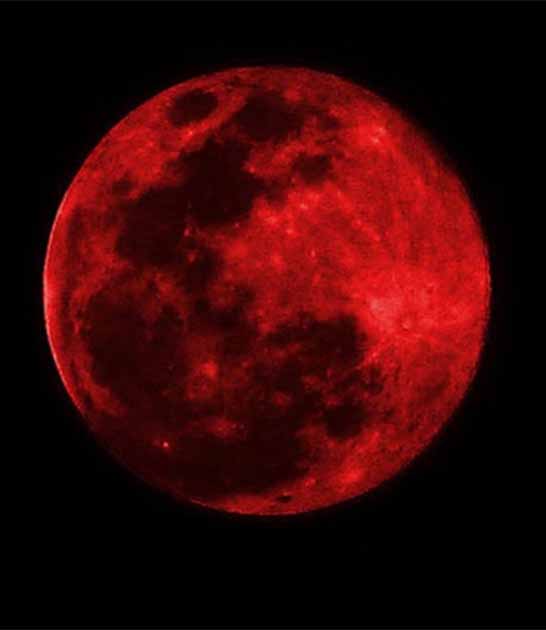On May 19, 1780, at precisely 10:00 a.m., the inhabitants of New England were stricken with fear, believing the end of the world had arrived. Darkness descended, as if it were the middle of the night, causing flowers to close and birds to return to their roosts.
The moon cast an unusual red glow as an impenetrable darkness spread from Maine to New Jersey, creating an atmosphere of dread and confusion. This incident came to be referred to as ” New England’s Day of Darkness.”
There are plenty of first-hand accounts documenting the alarm that spread as the usual daylight was replaced by lasting darkness, continuing even into the evening. Eventually, the Moon and stars were also swallowed by the encompassing blackness.
John Greenleaf Whittier, a poet, immortalized this unforgettable day in his work “The Complete Poetical Works of John Greenleaf Whittier” (1873):
“Twas on a May-day of the far old year
Seventeen hundred eighty, that there fell
Over the bloom and sweet life of the spring,
Over the fresh earth, and the heaven of noon,
A horror of great darkness.
Men prayed, and women wept; all ears grew sharp
To hear the doom-blast of the trumpet shatter
The black sky.”
Judgment Day
The unfamiliar occurrence was made even more frightening due to the absence of communication technologies, such as telegraphs or radios. Without an understanding of the cause of the pervasive darkness, people turned to their religious beliefs for answers.
Scriptures like: “The sun shall be turned into darkness, and the moon into blood, before the great and the terrible day of the Lord come” (Joel 2:31) and “The sun became black… and the whole moon became as blood. The stars of the sky fell to Earth…” (Revelation 6:12-13) led people to think the apocalypse had arrived. Reports say that people walked the streets crying out about the impending end. The citizens of New England during that period were deeply devout Protestants who often saw natural events as divine messages.

In the years and centuries following the eerie event, a variety of theories were proposed to explain the dark day, which occurred over 230 years ago. Explanations ranged from a solar eclipse, thunderstorm, volcanic eruption, fire, a unique atmospheric phenomenon, a mountain obstructing the sunlight, to a meteorite impact.
As time passed, many of these theories were discarded—astronomical data confirmed there was no eclipse during that period, and historical documents ruled out a thunderstorm. According to Thomas Choularton, an atmospheric science professor at the University of Manchester, no records of volcanic activity in 1780 exist, making a sun-obscuring ash cloud improbable.
In light of the lack of a plausible explanation, Sir John Herschel, a British mathematician and astronomer, proclaimed, “The dark day in North America was one of those wonderful phenomena of nature which philosophy is at a loss to explain.”
The Riddle Resolved by Science
Over two hundred years after the Dark Day of New England, scientific investigation eventually deciphered the long-standing enigma. In 2008, the University of Missouri revealed that tree-ring evidence from Ontario suggested that vast wildfires in Canada in 1780 were the probable cause of the inexplicable darkness in New England.
- Vulcan: The Planet we Saw which was Never There
- Year of Darkness: Why 536 AD Was a Terrible Time to be Alive! (Video)
Erin McMurry, a research assistant at the MU College of Agriculture, Food and Natural Resources Tree Ring Laboratory, stated in the university’s newspaper, “The patterns in tree rings tell a story. We think of tree rings as ecological artifacts. We know how to date the rings and create a chronology, so we can tell when there has been a fire or a drought occurred, and unlock the history the tree has been holding for years.”

In their paper “Fire Scars Reveal Source of New England’s 1780 Dark Day,” published in the International Journal of Wildland Fire, researchers noted that the wildfires caused thick smoke columns that reached the upper atmosphere and mixed with fog, altering atmospheric conditions over vast distances.
This explanation is reinforced by historical accounts that noted a smell of ash in the environment. Boston’s Jeremy Belknap, a geographer, mentioned in a 1780 letter to Ebenezer Hazard that the air bore the “smell of a malt-house or a coal-kiln,” and he noted that water bodies seemed to be covered with soot and were unusually dark.
McMurry concluded that the investigation offered “a unique opportunity to take historical accounts and combine them with modern technology and the physical historical evidence from the tree rings and solve a mystery with science.”
Top image: Another similar ‘Day of Darkness’, San Pedro de la Paz, Chile. Source: Andresisrael / CC BY-SA 3.0.